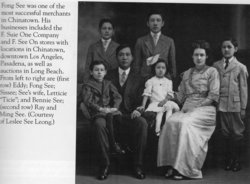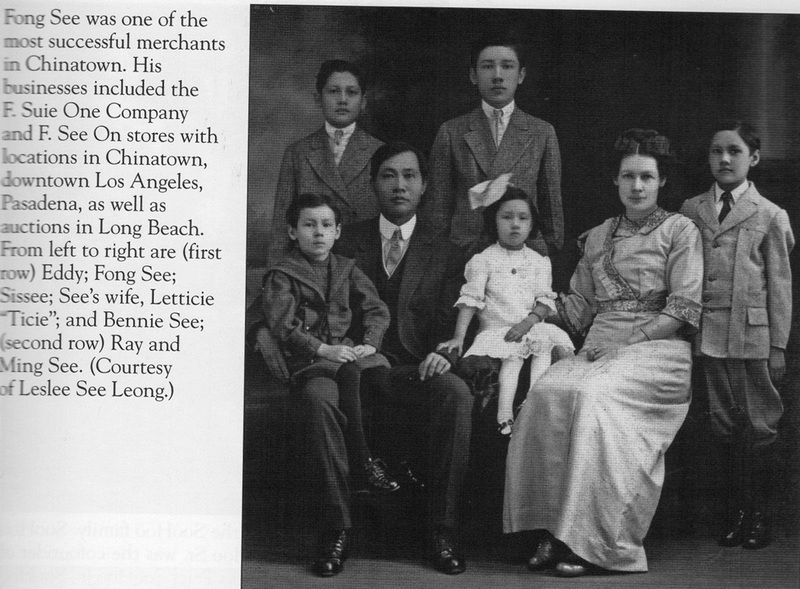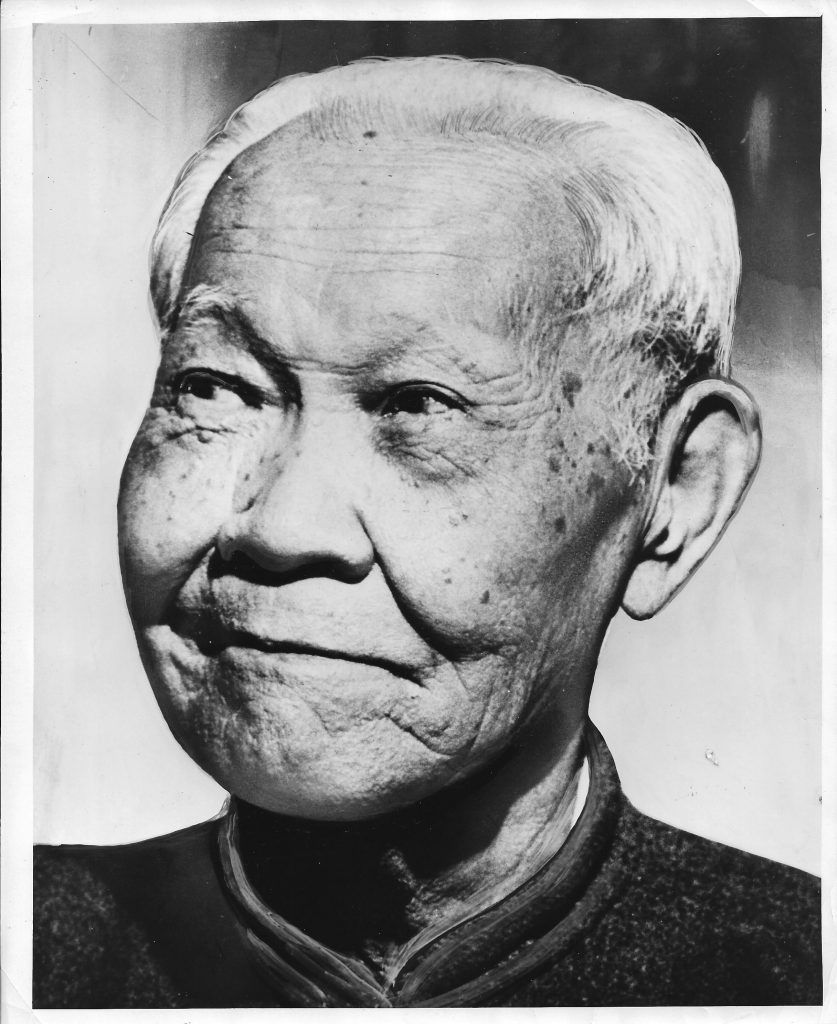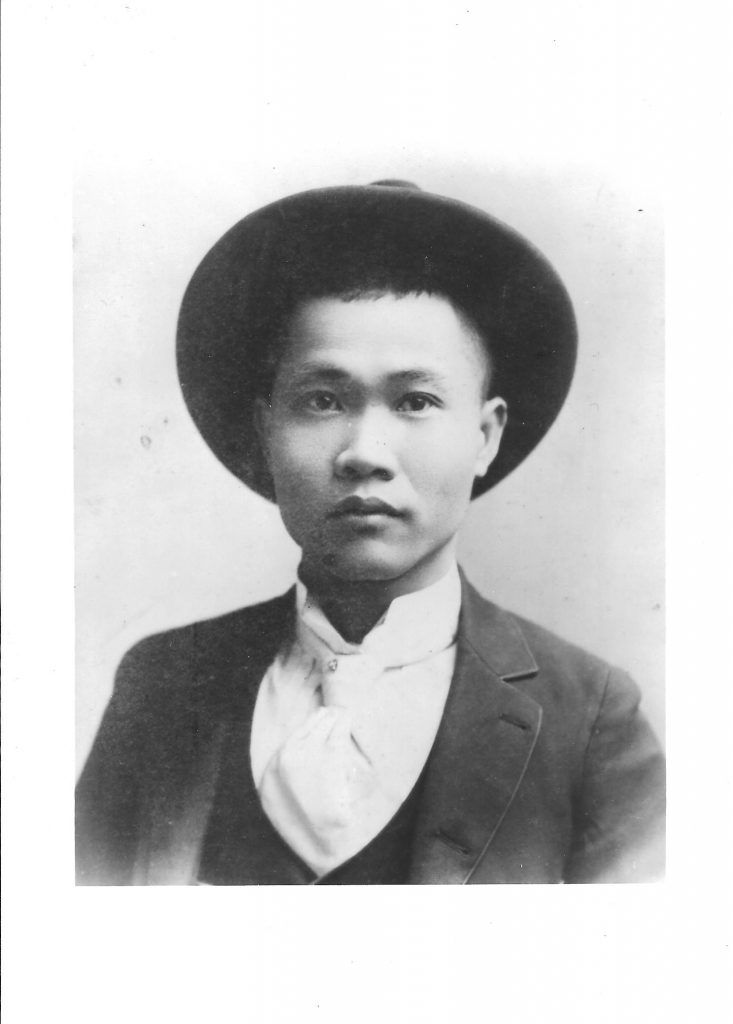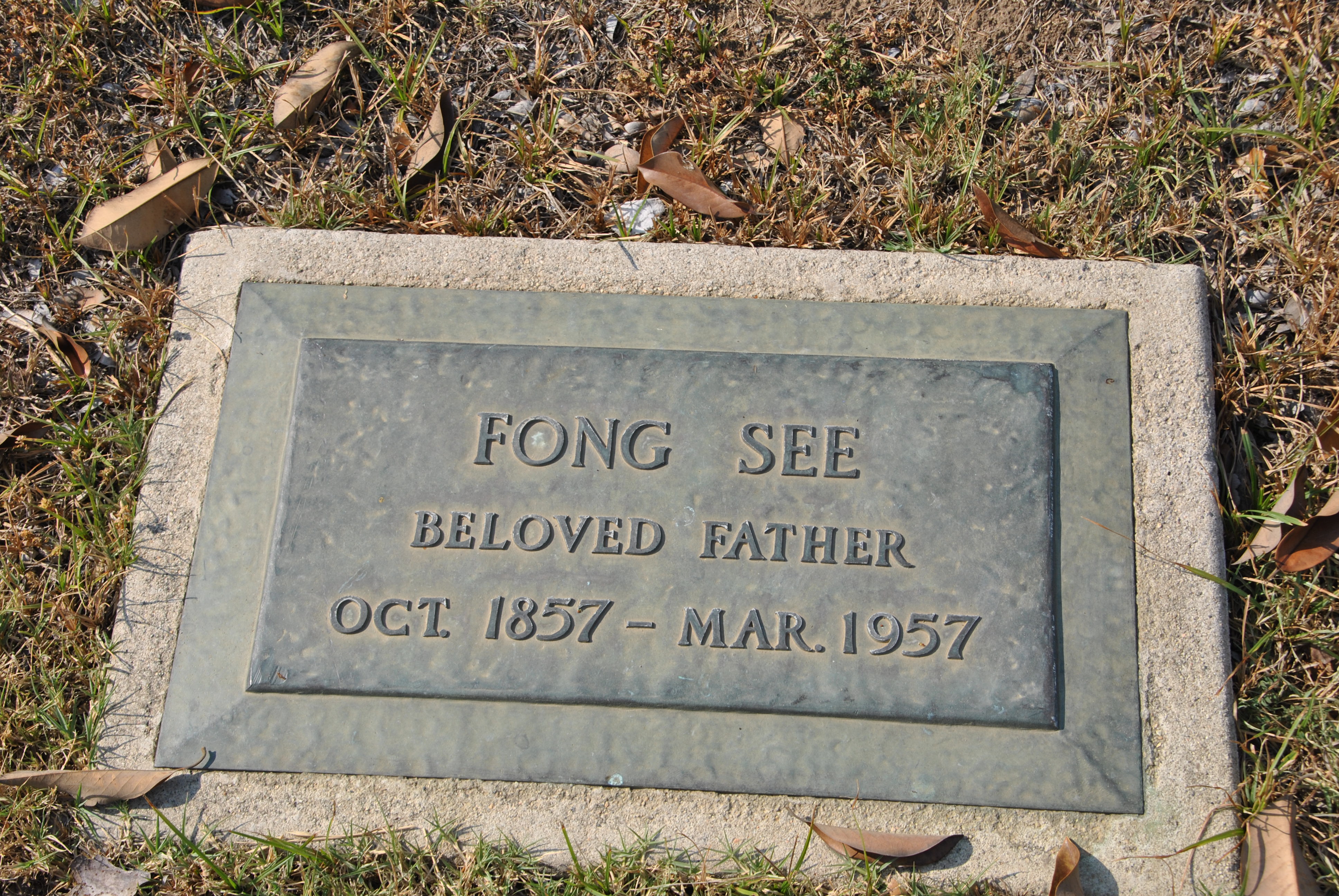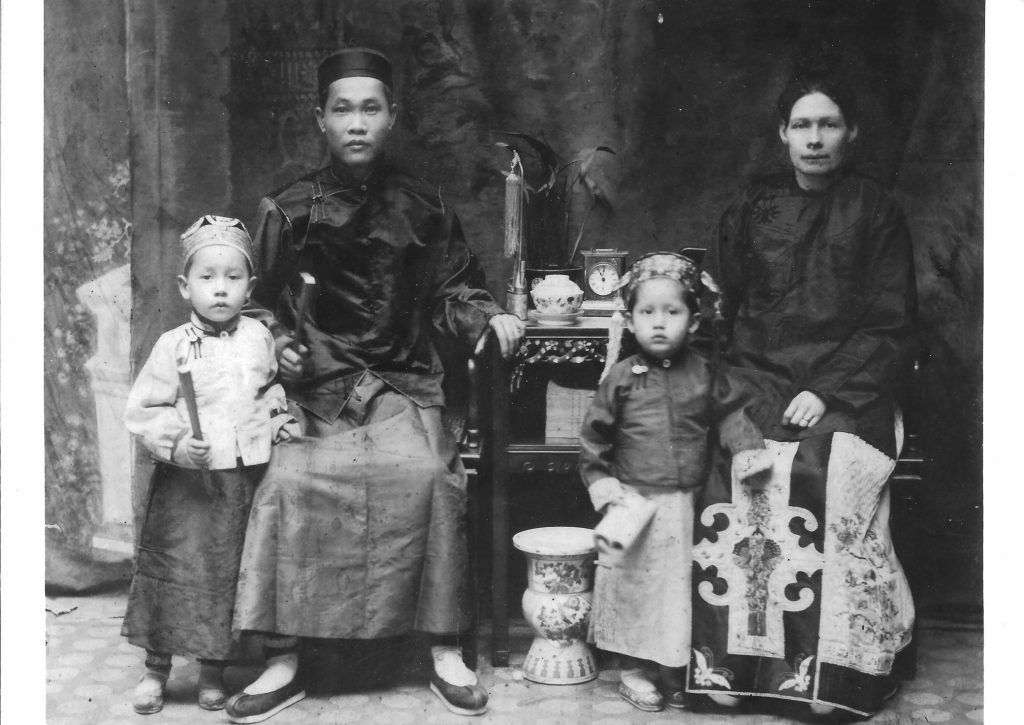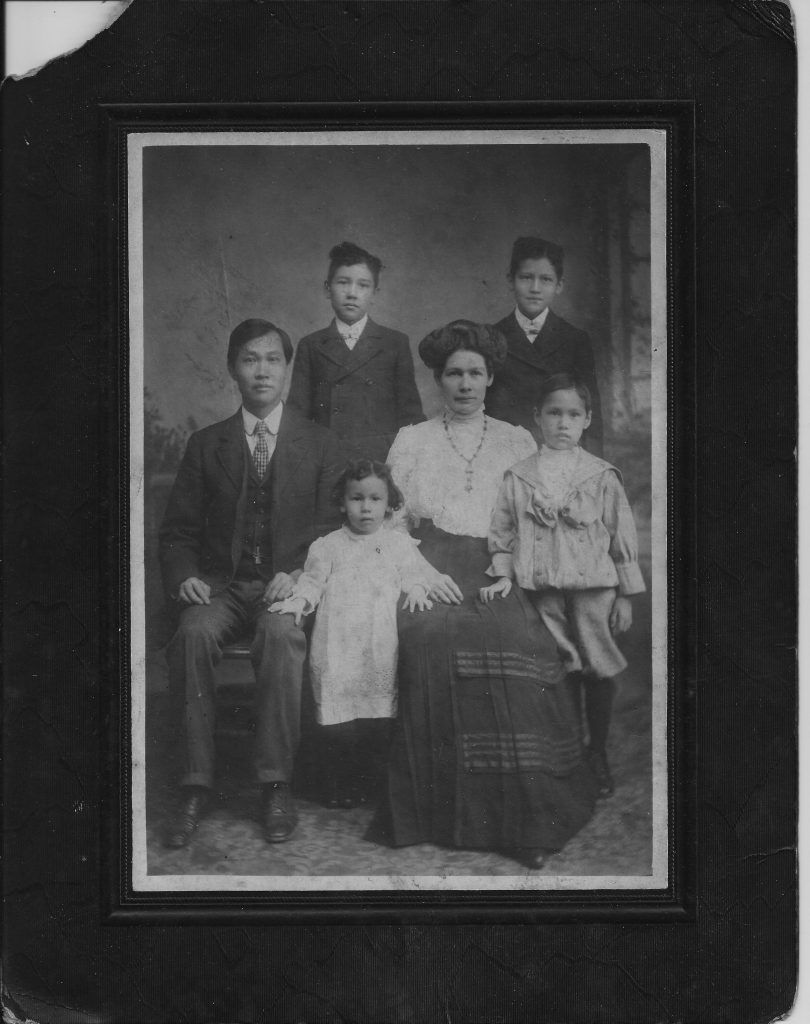On July 3, 1919, the See family was cleared by immigration officials and was allowed re-entry to the United States. Because of this, the See family did not have to return to China and Leticie, an American, was able to return to her homeland with her American-born children and naturalized husband. This scenario, although under unique circumstances, mirrors the discrimination against Chinese and even Chinese Americans who were already allowed into the US. The Chinese Exclusion Act prevented many from immigrating to the US and for many years, there is a discrepancy to the number of male immigrants to female immigrants that made it hard for these men to start a family.
Fong See came to the United States in 1871 as a fourteen-year old searching for his father, a doctor who had been employed by the railroad industry to administer to Chinese workers who were suspicious of Western doctors and their medical practices. Upon his father's return to China, Fong See and his two brothers took over his apothecary business. It was at his father's shop when one fateful day, Leticie Pruett, an eighteen-year old runaway from Oregon, came asking for a job. While working at the shop, Fong and Leticie developed a relationship and in 1897, they were contractually married through a lawyer since interracial marriages were against the law at that time.2
You can read more about Fong See and Leticie's story in the book "On Gold Mountain", by the See's great-granddaughter, Lisa See. An exhibition with the same title, was shown at the Smithsonian in 2001 that featured Lisa See as one of the speakers."
(http://apanews.si.edu/2011/07/28/fong-see-leticie-pruett/)
On July 3, 1919, the See family was cleared by immigration officials and was allowed re-entry to the United States. Because of this, the See family did not have to return to China and Leticie, an American, was able to return to her homeland with her American-born children and naturalized husband. This scenario, although under unique circumstances, mirrors the discrimination against Chinese and even Chinese Americans who were already allowed into the US. The Chinese Exclusion Act prevented many from immigrating to the US and for many years, there is a discrepancy to the number of male immigrants to female immigrants that made it hard for these men to start a family.
Fong See came to the United States in 1871 as a fourteen-year old searching for his father, a doctor who had been employed by the railroad industry to administer to Chinese workers who were suspicious of Western doctors and their medical practices. Upon his father's return to China, Fong See and his two brothers took over his apothecary business. It was at his father's shop when one fateful day, Leticie Pruett, an eighteen-year old runaway from Oregon, came asking for a job. While working at the shop, Fong and Leticie developed a relationship and in 1897, they were contractually married through a lawyer since interracial marriages were against the law at that time.2
You can read more about Fong See and Leticie's story in the book "On Gold Mountain", by the See's great-granddaughter, Lisa See. An exhibition with the same title, was shown at the Smithsonian in 2001 that featured Lisa See as one of the speakers."
(http://apanews.si.edu/2011/07/28/fong-see-leticie-pruett/)
Family Members
Sponsored by Ancestry
Advertisement
Advertisement
